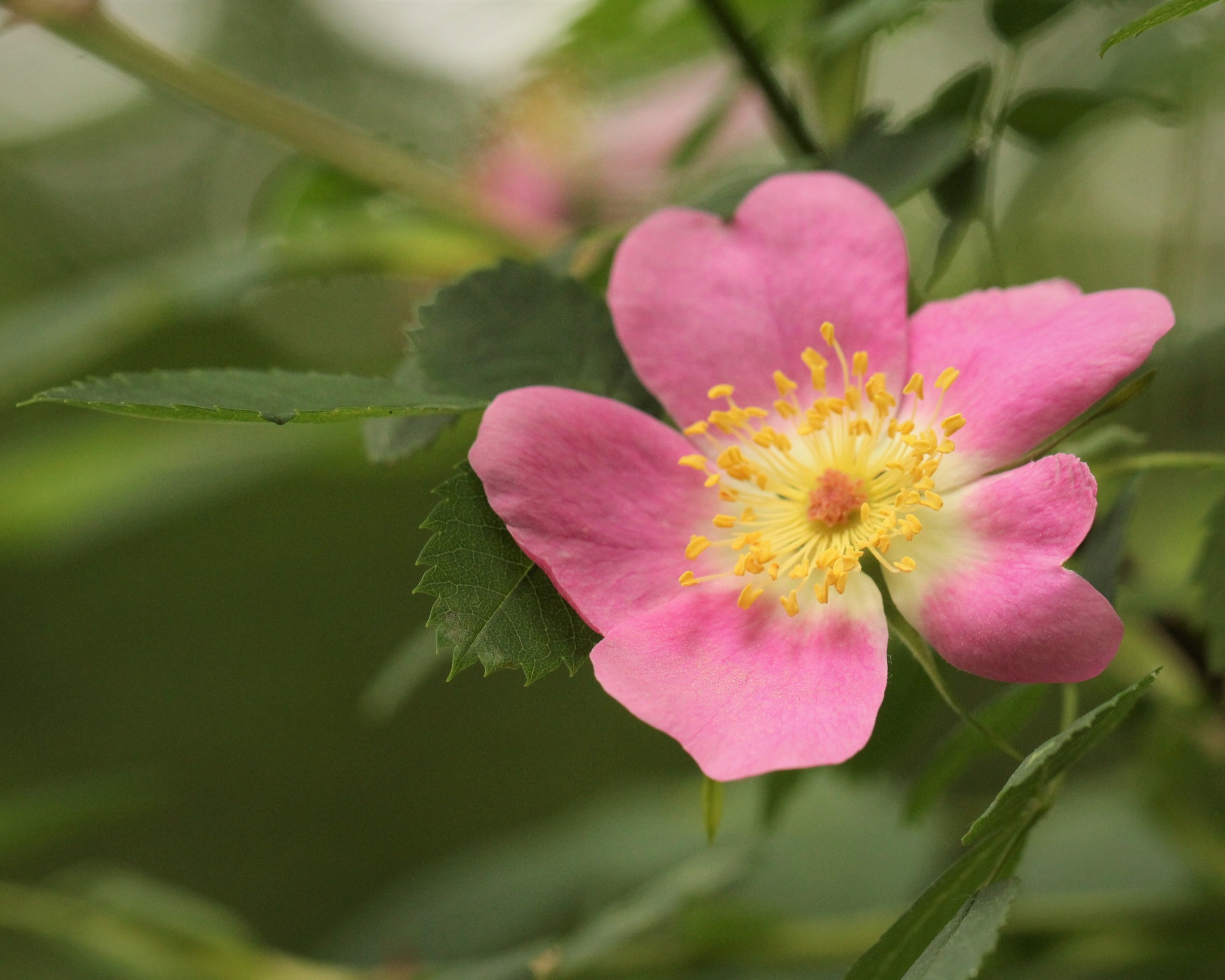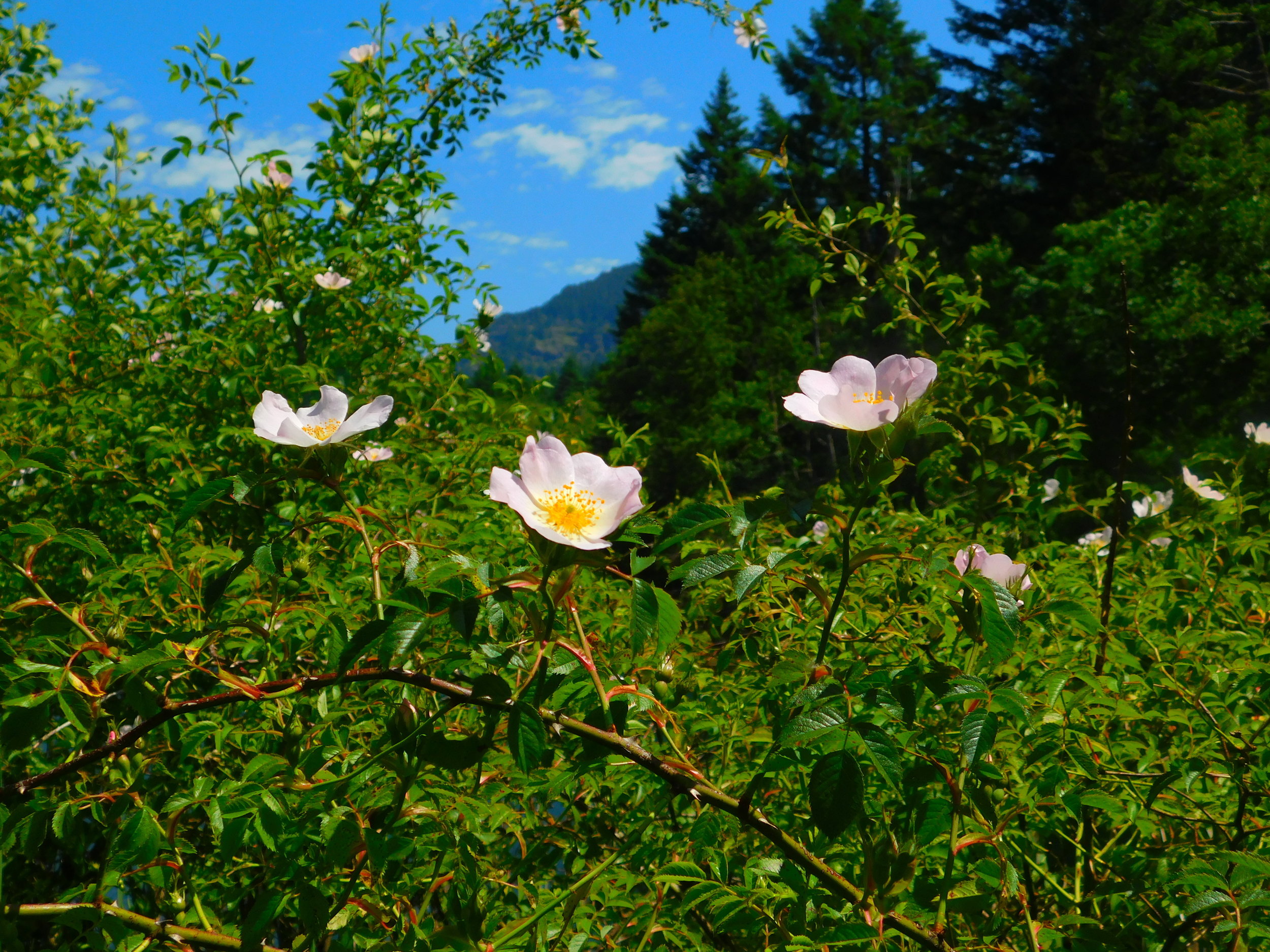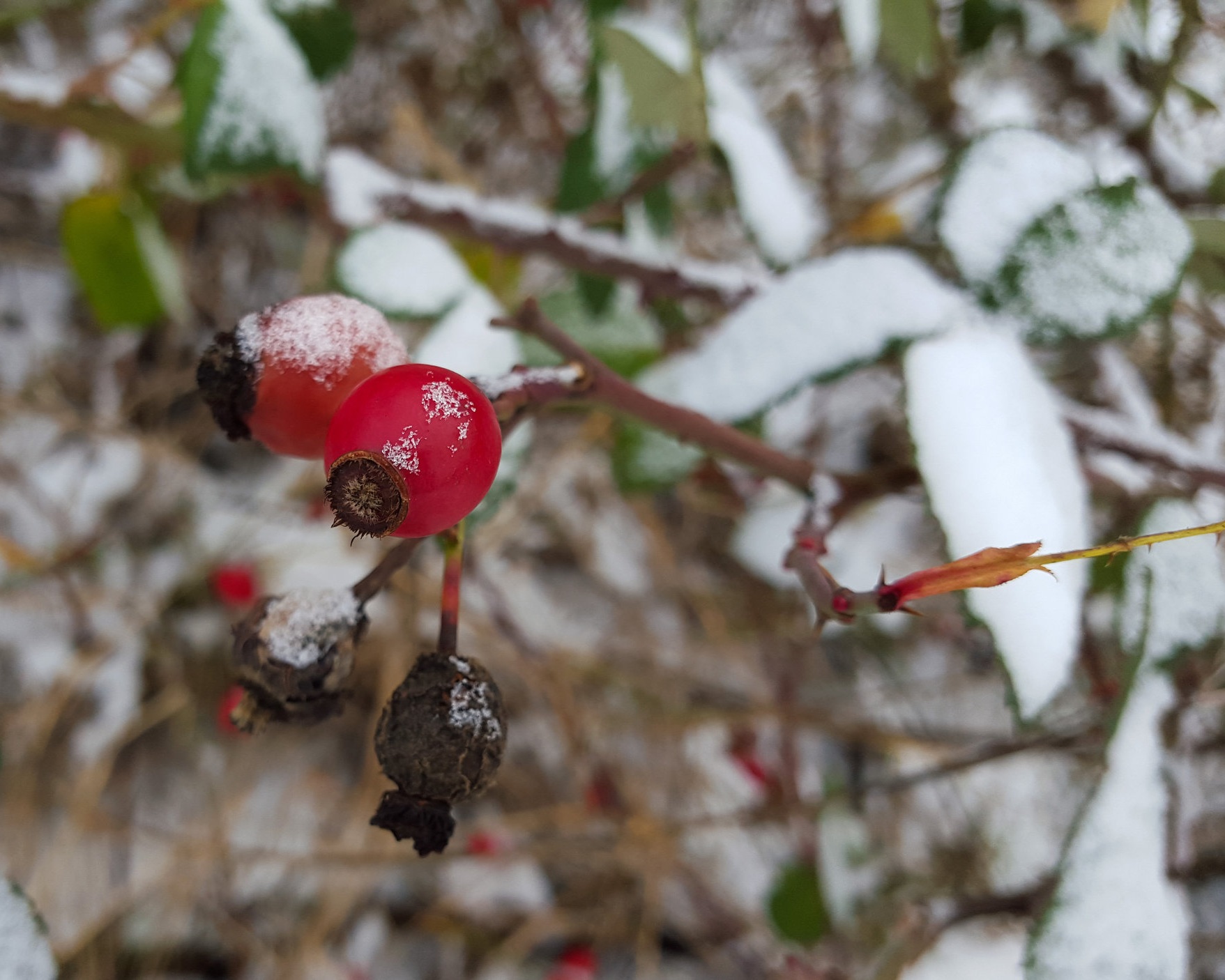Rosa woodsii (Woods rose)
Deciduous thorned subshrub to shrub up to 10 ft. tall with fleshy red fruit hips and pink to deep rose colored flowers, blooming May to October. Adapted to a wide range of well drained soil textures and moisture conditions on slopes and meadows within shrub-steppe, pinyon-juniper woodlands, deciduous and conifer forests and also riparian and wetland communities; up to 11,500 ft. elevation. The most common native rose in western North America, but highly variable traits throughout its distribution. Aggressive pioneer strongly tolerant of disturbance and wildfire. Forms thickets by suckering and layering, when branches take root after soil contact. Provides nesting and escape cover for numerous birds and small mammals. Leaves are browsed by livestock and wild ungulates. Native hips are a premier natural source of vitamin C, feeding a diversity of birds and mammals, including deer, porcupine, beaver, coyote, bear and sharp-tailed grouse. Persistent hips are an especially important food source during snow cover. Pollinated by insects and native bees.
DISTRIBUTION / ADAPTATION
INFORMATION & ATTRIBUTES
Family: Rosaceae
Duration: Perennial
Growth Habit: Subshrub
Native Status: Native
Growth Form: Rhizomatous
Mature Height: 2-6 ft.
Bloom Color: Red
Fruit/Seed Color: Red
Bloom Period: Late spring
Annual Precipitation: 12-40 in.
Drought Tolerance: Medium
Shade Tolerance: Intermediate
Elevation: 3,500-9,000 ft.
Wetland Indicator Status: FACU
Fire Resistance: No
Fire Tolerance: High
Nitrogen Fixation: None
SOIL ADAPTATION
Coarse Texture: Yes
Medium Texture: Yes
Fine Texture: No
Salinity Tolerance: Low
CaCO3 Tolerance: Low
pH Range: 5.0-8.0
SEEDING NOTES
Seeds per Pound: 50,900
Seeding Rate: 0.5-1.0 PLS lbs/acre
Season: Fall
Days to Germination:
VARIETIES & LOCAL ACCESSIONS
None





